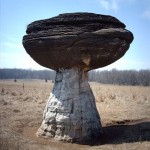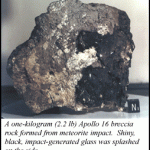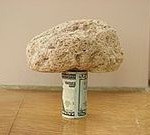ROCKS
and
MINERALS
Imagine you’re walking along a rocky path in a remote area, and your eye catches a funny-looking rock. Would you be able to tell if it was a meteorite worth millions of dollars? Watch the YouTube video below and see a guy who may have found such a rock. When it comes to rocks and minerals, treasures can come in many forms, as long as you know what you’re looking for. Take a LittleClickers Internet field trip with us as we learn more about rocks and minerals.
1. Can I find gold in my backyard?
Perhaps, but it helps to be in a state like California or Alaska. To see if there’s gold in your area of the USA, visit http://www.blackcatmining.com/reference/public-gold-panning.cfm. Next, have a look at the YouTube video ( below) and meet a guy in Alaska who will teach you how to pan for gold. If you find some, be sure to bring it to a bank for deposit for safe keeping.
2. What is the most expensive rock in the world?
Have a look at http://curator.jsc.nasa.gov/lunar/index.cfm, and you’ll learn about a rock that cost over a billion dollars to find. Why? Here’s a hint. If you look at the URL, you’ll see the four letters NASA — which means that this rock came from space.
3. What is the difference between a rock and a mineral?
At http://www.fi.edu/fellows/fellow1/oct98/index2.html, you can take a test about rocks. You can also learn about how to start a rock collection, and what kinds of tools you’ll need. See also http://www.rocksforkids.com/RFK/identification.html#difference, and you’ll learn that although all rocks are made of two or more minerals found in nature, minerals are not made of rocks.
4. What is a diamond cutter?
Consider the rock star Antonio Bianco. His job was to take giant raw diamonds and cut them into stone worth millions of dollars. Bianco, who recently died, worked on ‘The Flame’ (see http://www.safdico.com/expertise/showcase/The-Flame), which is one of the world’s biggest diamonds. He used to like to sing while he worked. Read about his life at http://www.nytimes.com/2009/06/28/nyregion/28bianco.html. If you want to see how diamonds are cut, watch this PBS special on diamond cutting:
5. Can you tell the difference between granite and limestone?
Play the matching game at http://www.learner.org/interactives/rockcycle/types2.html to see how many types of rocks you can identify.
6. True or False. All rocks sink when placed in water.
False. See http://en.wikipedia.org/wiki/Pumice and http://www.childrensmuseum.org/geomysteries/floatingrock/a1.html to learn how some rocks formed with tiny air bubbles inside, allowing them to float in water.
7. What are rock formations?
That’s when forces of nature, such as erosion, create natural eye-catching sculptures that make you stare in wonder and awe. Have a look at http://www.scienceray.com/Earth-Sciences/Geology/Worlds-Most-Impressive-Rock-Formations, and see if you can spot this giant mushroom-shaped formation, located in Kansas. it was formed by the erosion of a harder rock on top of a softer rock. See also
http://www.scienceray.com/Earth-Sciences/Geology/Amazing-Animal-Shaped-Rock-Formations and
http://www.bukisa.com/articles/26755_unusual-rock-formations-that-resemble-humans-
8. I have more questions!
You might want to ask a scientist who studies rocks for a living– known as a geologist. If you’d like to send one a question via email, try http://walrus.wr.usgs.gov/ask-a-geologist/.








